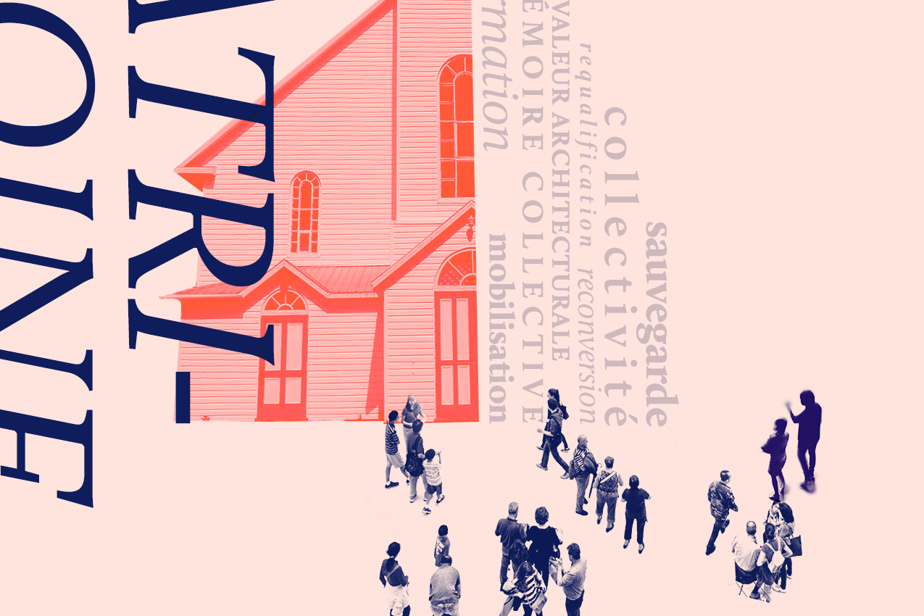What will this toolbox, which is scheduled to be launched in February 2025, be?
It will be a website that will bring together informative documents. It could be, for example, a document that explains the difference between a citation regulation, a heritage citation or a heritage status, with all that this implies. It could also be practical tools, such as Excel files for economic models.
Who will this toolkit be aimed at?

PHOTO MARTIN TREMBLAY, THE PRESS
Marianne Lemieux-Aird, head of the consulting services division of the Entremise company
Local NPOs, municipalities, cooperatives or even groups of citizens who are not yet structured, but who have this desire to requalify heritage buildings.
Why will it be useful?
Because transforming vacant or underused buildings into collective projects is a very complex operation. And there is little funding available to get through the preliminary stages. We therefore hope to equip groups so that they can get through these crucial stages.
What are the benefits of requalifying a building?
There are several. First of all, there is currently a crisis of affordable workspaces. They are very rare at the moment, even if there are many vacant or underused buildings. Requalifying a building is a solution to this lack of space, more ecological than new construction. Heritage buildings have a value in the collective memory. And so, we believe that it is important to try to breathe new life into these buildings.
How do you define a heritage building?
That’s a big question. Of course, there are buildings that have a strong architectural value and are part of the collective memory, such as churches and town halls. Our definition is broader: we say that everything is heritage when a group of people consider that a building has value in the collective memory.
So, for example, it could be a building from the 1970s?
Absolutely. After that, it is certain that there are heritage statuses that will govern the way in which buildings are reclassified. There are certain buildings that will not necessarily have access to heritage statuses, but which are just as interesting in our eyes.
No need for the heritage label from the Ministry of Culture and Communications to qualify it as heritage?
Municipalities can award this heritage citation without necessarily having to resort to the ministry. Only by consulting the population and by drafting this citation regulation regarding any building.
What are the ingredients for success?
There is no magic recipe. Each project is very different, the buildings are different, in different contexts. However, in all cases, citizen mobilization and participation are very important. And communication too. In the case of churches, for example, it is very important to consult people, to actively involve them in the projects and to inform them throughout the process. Not just trying to achieve social acceptability where we present an almost finished project.
Is there a recipe for failure?
I think it would be to try to bring in a new program that is not at all related to the building. For example, if a group had the idea of transforming a church into a 500-seat performance hall for the entire region. If they have not taken the time to understand what the real needs were, to see who could carry out a cultural program of this magnitude, there is a strong risk that they will invest a huge amount of money to try to breathe new life into a building that will remain very underused.
Who is involved in creating this toolbox?
Entremise is in partnership with the Conseil du patrimoine religieux du Québec for places of worship and with Écobâtiment for the collective real estate component as a whole. We are also in partnership with TIESS (Territoire révolutionnaire en économie sociale et solidaire), the Passerelle cooperative and Héritage Montréal for heritage buildings. Each has its own set of tools. The goal is to reference all the existing tools in the same place so that someone can have a global vision.
Can you give examples of projects completed?
There are a lot of churches being repurposed in Quebec right now. In the case studies I did, there is the church in Saint-Germain-de-Kamouraska that was transformed into a space for circus rehearsals with a small climbing centre. And in the back, there are places where people make pottery. There is also the church in Saint-Stanislas, near Lac Saint-Jean, that the municipality transformed into a community hall with a small convenience store, a library and a large climbing wall. It is quite impressive what a population of less than 400 inhabitants can achieve.
Visit the Entremise website
